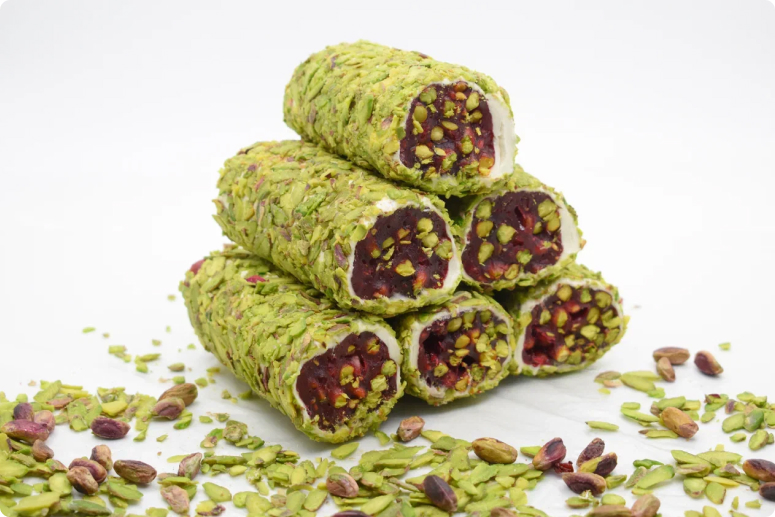Turkish delight, one of the mysterious flavors of Turkish cuisine, has evolved over centuries and been influenced by many cultures. In this article, we will explore the history of Turkish delight and its journey of flavor.
Historical Origins
Turkish delight, historically known as “lokum” in Turkish, first emerged in Central Asia, the ancestral lands of the Turks. Over the centuries, this sweet accompanied Turkish migrations and conquests, adapting to different regions and taking on various variations.
The Dance of Ingredients
Turkish delight is primarily made using sugar, water, and starch. Sugar and water are melted in a pot, and starch is added. The mixture is boiled, stirred, and eventually takes on the delightful consistency of Turkish delight.
Taste and Aroma
The unique taste and aroma of Turkish delight stem from the ingredients used. Traditionally, rosewater or rose flavoring imparts a distinct flavor to the delight. Additionally, lemon juice adds a touch of acidity, providing a balanced taste.
Cutting and Garnishing
The mixture is poured into molds and left to cool. It is then cut into small, bite-sized pieces, each piece garnished with pistachios, coconut, or Antep pistachios. This garnishing enhances the aesthetic and flavor of Turkish delight.
Worldwide Fame
Turkish delight has transcended Turkey’s borders and gained popularity worldwide. Today, it comes in various types and flavors, allowing it to serve as a canvas for modern interpretations of this traditional delicacy.
Turkish delight is not just a delightful sweet treat; it is a reflection of the richness and history of Turkish cuisine. Each bite tells the tale of a rich tradition.
Turkish delight, with its rich history and unique flavor, is a captivating confection. This article can be a guide for anyone curious about the origins and taste journey of this sweet delight.


